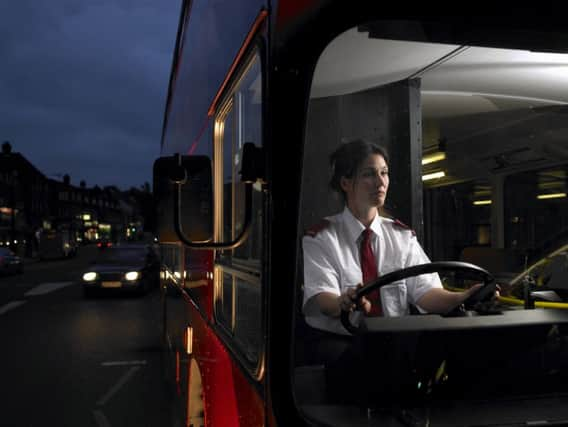The burning issue Scotland’s traffic commissioner wished she’d tackled - Alastair Dalton


Joan Aitken has made the buses safer and run on time but wishes she had done more to challenge sexism and the barriers to making transport more gender balanced.
Joan Aitken does not pull her punches. The former Traffic Commissioner for Scotland, who stepped down in February, also never minced her words in 16 years of regulating buses and lorries.
Advertisement
Hide AdAdvertisement
Hide AdRecalling her time in the hot seat at an event in Edinburgh this week, she said she had turned the “turgid”, paperwork-focused approach of the office into “dynamic engagement” with bus operators and haulage companies, driven by her overarching goal of keeping people safe on the roads.
From the cases I have covered over the years, Ms Aitken had no compunction in banning miscreant operators or putting them out of business, and she let them know why in no uncertain terms.
She told a Glasgow lorry driver she would not wait until he killed someone, and he could not be trusted behind the wheel because his greed for making more money came before safety.
The owner of a South Lanarkshire childcare centre was told that Ms Aitken was “singularly unimpressed by her seeing herself as some sort of victim” - when she had failed to get a licence.
Speaking to the Scottish Transport Studies Group think tank, Ms Aitken’s job sounded at times like being a sheriff in the Wild West, imposing the law on bus wars, “baddies” and the “criminality” of some operators.
However, while Ms Aitken said she had largely stamped out such behaviour, and buses were now much more reliable, punctual and safer, she admitted there was still one key area in which she wished she had done more.
The former traffic commissioner said she had noticed sexism soon after taking over, and wondered if dodgy operators told her wheels came off buses for no reason “because I was a girl”.
She observed there had been some improvements, such as the “nonsense of naked lady photos” on depot walls being removed.
Advertisement
Hide AdAdvertisement
Hide AdBut Ms Aitken said there remained “real issues” over increasing the number of women working in transport.
A report by the cycling and walking body Sustrans Scotland last year highlighted that transport had the lowest percentage of women in senior posts within the public sector north of the Border - of just 6.25 per cent.
In addition, despite comprising nearly half the UK workforce, women account for only around one in five transport workers.
Ms Aitken observed that while there were some very successful female bus drivers and hauliers, working conditions remained a major deterrent to more women working in the sector.
She said part of the problem was the lack of basic facilities, such as toilets, and suitable shift patterns.
The Women in Transport group has stressed the importance of a more gender-balanced workforce to help better address women’s needs as passengers - since the majority on buses are female. With so few women at the helm of Scottish transport firms, it’s encouraging to see at least some new additions.
As well as lawyer and engineer Claire Gilmore replacing Ms Aitken as traffic commissioner, Caroline Donaldson was this week appointed as managing director of the West Coast Partnership Development, which will help devise plans for HS2, whose trains are due to run on to Edinburgh and Glasgow.
She joins industry leaders such as bus firm Xplore Dundee managing director Christine McGlasson, and Scottish Canals chief executive Catherine Topley - but there should be many, many more. Who’s next?